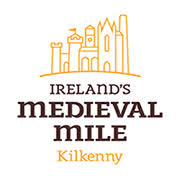The Ossory Werewolves
Accounts of the fabled werewolves of Ossory are recorded in Medieval Irish, English and Norse sources. The legends most likely originated from the fact that warriors in ancient Ireland are often referred to as having wolf like characteristics from the wearing of wolf skins to have wild hairstyles. The adjective to “go wolfing” was a term used as the warriors as they went on raids. These wolf warriors or luchthonn (wolf-skins) were most likely the basis for background to the Irish stories surrounding werewolves.
Up to the 16th and 17th centuries, Ireland was still a densely wooded country and wolves were still plentiful in the wild areas. During the 1650’s rich bounties were placed on the hunting and extermination of wolves. The last recorded account of the killing of a wolf occurred near Mount Leinster in County Carlow as late as 1786; the wolf was killing sheep.
The ancient kingdom of Ossory comprised largely of what is now Counties Laois and Kilkenny before the Normans arriving in Ireland in the late 12th century. The kings of Ossory claimed descent from one Laignech Faelad who was said to be the first to adopt the wolf-shape. His brother was called Ferdach Mac Duach and was recorded in a medieval genealogy as the king of Ossory and the ancestor of the subsequent generation of kings all the way to the Norman Conquest.
The famous Gerald of Wales in his book Topographia Hibernica (Geography of Ireland) recorded one of the most famous accounts of the werewolves of Ossory. Gerald presents the story of an unnamed priest who was travelling from Ulster when he encountered a wolf in the woods. To the priest’s astonishment, the wolf begins to talk to him and tells the priest not to be afraid. The priest in turn asks to wolf not to attack him and to explain his story:
“There are two of us, a man and a woman, natives of Ossory, who through the curse of Saint Natalis the abbot, are compelled every seven years to put off human form and to depart from the dwellings of man. Quitting the human form, we then assume that of wolves. At the end of seven years, if chance to survive, two others being substituted in their place, they return to their country and their former shape. And now, she who is my wife lies dangerously ill not inspired by divine charity, to give her consolations of your priestly office”.
The priest complies and gives last rites to the sick female wolf and the male wolf pulls down wolf skin to reveal an elderly human woman underneath, to show the priest that he is not committing blasphemy. The priest then gives communion to the she wolf and the male wolf leads the priest safely from the woods. The wolf finally makes a number of prophesies concerning the future of Ireland and the Norman invaders. The priest is later summoned before the Bishop of Meath and, on Gerald’s advice, is ordered to travel to meet the Pope to present his story.
Catherine Karkov in her book “Tales of the Ancient: Colonial Werewolves and the Mapping of Post-Colonial Ireland” has argued that the story of the Ossory Werewolves could be seen a political metaphor for the Norman settlement of Ireland. She argues that the Irish people themselves as being bestial in appearance, yet still redeemable thought the Christian sacrament, as they were made in the image of God underneath. The old dying female wolf could be seen as a personification of Ireland and a symbol of the passing of the old Irish (Celtic) church with its different character to the new English church brought with the Normans.
In the 13th Century poem, De hominbus qui se vertunt in lupos (Men who change themselves into Wolves) describes how men are able to leave their human bodies behind and assume to shape of a wolf. Their human bodies were vulnerable while they were away as wolves and any injury on the wolf form would be reflected on the human form. Their friends and family were told not to move their bodies as any disturbance and they would not be able to return to their bodies. Wolfwalkers the 2020 film borrows from the story of the Werewolves of Ossory especially the accounts where they become wolves by leaving their bodies while they are asleep.
Peter Kenny, October 2021
Image: Gerald of Wales,Topographia Hibernica



